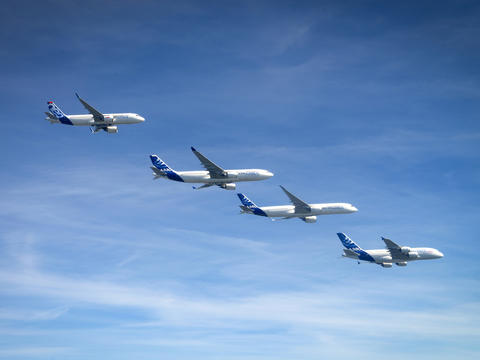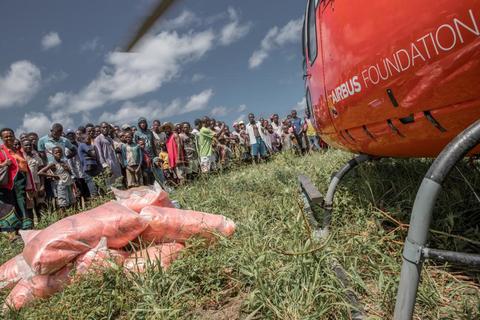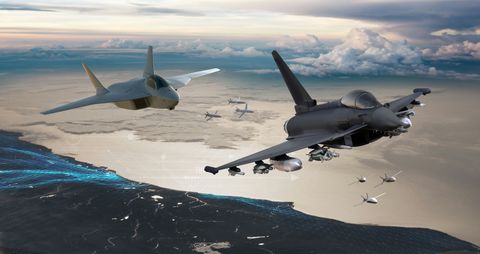At Airbus, we are proud of how our products and services contribute to communities around the world.
Our satellites and tracking systems help make oceans safer with solutions that monitor and protect naval routes and maritime assets. Airbus-built aircraft are instrumental in firefighting, public safety and maintaining energy systems. Our products are the workhorses that carry out construction and infrastructure projects in local communities. And technology solutions from Airbus protect many critical systems from cyberattacks, helping maintain their integrity when it’s needed most.
The workhorses for construction and infrastructure
As true workhorses in tough environments, Airbus products perform heavy lifting when needed most.
From assessing project locations with satellite imaging to delivering materials at difficult-to-access construction sites or providing on-scene live coverage of an unfolding event, Airbus products respond to a wide array of critical needs for all types of projects.
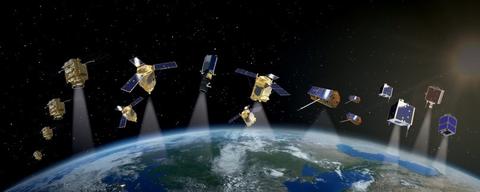
Mitigating risk with 3D satellite imaging
The development of many– especially those in remote areas with limited geological and topographic data – require highly accurate data to assess a project’s feasibility. Airbus’ satellite technologies provide precise digital elevation models to make decisions that help ensure the endeavour’s success.
Once a project is initiated, satellite imagery can help monitor the construction’s progress as well as providing information on its possible impacts on soil and or water quality – ensuring that projects are carried out in strict compliance with environmental standards and safety regulations.
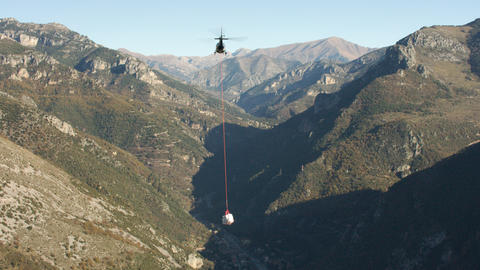
Delivering materials and supplies to remote areas
The helicopter is often the only tool able to transport heavy loads, building materials, supplies, cargo…and more in hostile or inaccessible areas.Every Airbus helicopter version is designed to carry heavy-duty aerial cranes.

Protecting and maintaining power lines
The use of helicopters for construction, surveillance and maintenance of electrical transmission grids provides vital services that keep the power on for communities around the world.Helicopters have multiple advantages in this type of aerial work, including the ability to visually inspect approximately 300 km of power lines per day from the air, rapidly detect any potential problems, and reach difficult or inaccessible areas.
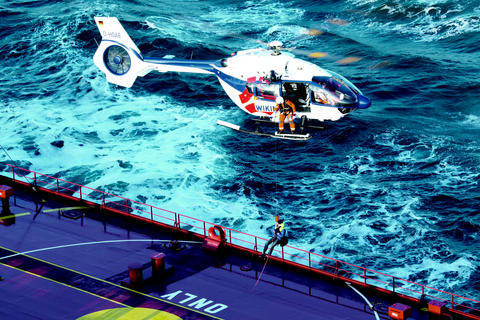
Safely delivering harbour pilots
Large harbours that serve as hubs for global trade often are difficult and potentially dangerous for large shipping vessels to navigate. Many require specially-trained harbour pilots who know the waters and terrain to safely bring the ship to dock. Compared to boats, helicopters can transfer these pilots to vessels arriving at ports faster and safely, with the pilot being set down directly on the deck – eliminating the need for freeboard climbing, thereby making the journey even safer.

Newsgathering when time is critical
When news happens and information is needed, helicopters are on the scene in minutes to provide live coverage of everything from natural disasters to police pursuits. Knowledge is key, and helicopters can arrive at difficult-to-access locations to document unfolding events and provide the public with the information they need to know.
Public Safety
Safety throughout the community is the goal of public service agencies around the world.
The men and women charged with upholding public safety rely on Airbus products for their critical missions, as deployed by local police to the coast guard, search teams, SWAT (special weapons and tactics) teams and customs officials.
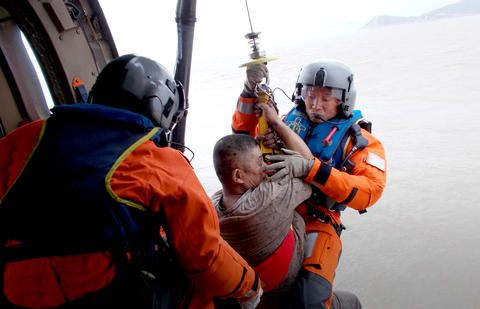
Helping keep our communities safe with helicopters
Helicopters play a key role in ensuring safety within a community. When disaster strikes, helicopters often are first on the scene, assessing damage or casualties, providing evacuation services, critical infrastructure checks and quick reaction force deployment when an emergency situation arises. If a person goes missing, helicopters are called upon to search large areas quicker and more effectively than ground patrols.
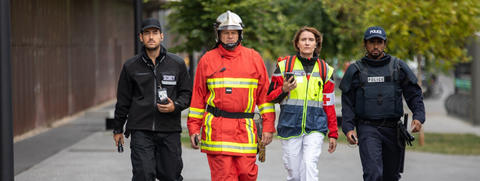
Helping the helpers with secure communications
Public safety organisations, such as police forces, firefighters and healthcare facilities must work together on their overlapping responsibilities – requiring them to share information and work in close coordination to ensure community health and safety. This requires reliable and efficient communication and collaboration solutions, allowing secure operations and interoperability between multiple organizations.
For over 30 years, Airbus has been a trusted partner for public safety organisations. Our field-proven and tailored solutions equip customers to handle any situation.
Last year, we successfully located 62 missing people, all still alive, but people who might well have died without the help of our police helicopter unit.
- Martin Landgraf, deputy chief of Germany’s Baden-Württemberg’s police helicopter unit
Energy
Helicopters are essential to keep our energy systems running. From renewable energy such as offshore wind farms to traditional energy sources like oil and gas, these rotorcraft are key components that maintain the energy industry’s operations at the optimum output.
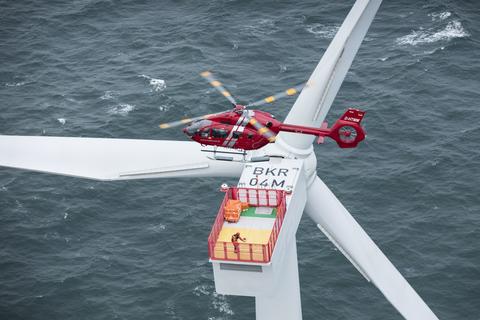
Unbeatable workhorse for wind energy
The investment in renewable energy sources has spurred major growth in recent years, especially in the production of offshore wind energy. Through countries’ capitalisation of this industry, the number of offshore wind farms are multiplying every year.

Sustaining oil and gas operations
Traditional energy sources like oil and gas depend on helicopters to transfer crew, equipment, and medical services, along with conducting inspections and providing repair services. Offshore platforms that are difficult to access count on the speed and reliability of helicopters. Land-based rigs in highly remote locations also require helicopter services for logistics support as well as pipeline patrols to ensure safety and environmental protection.
Weather conditions in the North Sea can be tricky. Even if the wave height is really high where boats can no longer deliver mechanics to the wind parks, the helicopter is still able to do this job.
- Dennis Roggeveen, a pilot for Helicopter Travel Munich (HTM).
Firefighting
Wildfires are increasingly becoming larger, faster-spreading, and more difficult to control. Climate change is one reason for this. The hotter global temperatures have created drier conditions, sapping vegetation’s moisture. The depopulation of rural environments and the shift away from mountain living, as well as human actions, are some of the factors that make the new generation of fires more difficult to control.
Firefighting, traditionally considered to be just one of the many aerial roles of helicopters and aircraft, is now becoming one of their most critical tasks, especially in summer.
Essential aircraft combating wildfires
Every minute counts when a fire breaks out. Helicopters offer the speed and ability to reach the scene quickly, dousing fires with water-bombing systems that can deliver some 800 to 4,000 litres of water every two to three minutes when a water source is nearby for refills. Early intervention with the use of helicopter-delivered water drops can slow down a fire’s progress and help in its containment.
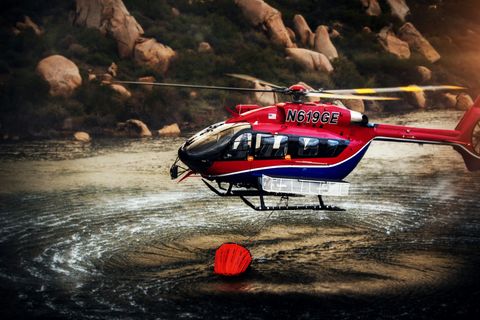
When a fire breaks out, helicopters offer the best way to reach the scene very quickly. Therefore, this is the solution that we look to first.
- Denis Bargès, Head of the Bouches-du-Rhône fire service’s Forest Fire Group Doctrine and Flight Service in France
Cybersecurity
Major cyberattacks have the power to paralyse organisations and have become a daily menace. They can threaten national security, upend our healthcare systems, or wreak havoc on the digital tools we rely on in our everyday lives: such as clean water systems, local power grids and more. The severity of attacks underlines their potential impact on Europe’s economy and society, annually estimated at 340 billion Euros.
To counteract this threat, Airbus has developed agile solutions to protect companies, governments and critical infrastructures.
Over 170,000 security applications from Airbus are used worldwide, which are overseen by the company’s Airbus CyberSecurity business and its staff of 600 employees.
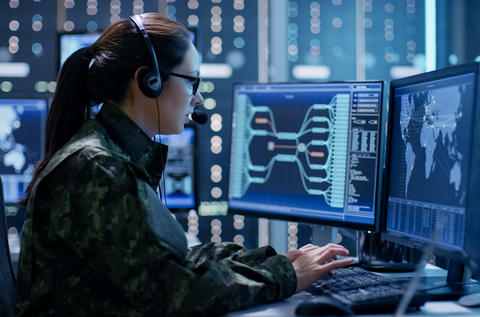
The job of the Security Operations Centre manager is to guarantee the security of the theatre's information systems. We detect and neutralise any cyber threat to enable the BARKHANE Force to use the full extent of its digital resources, factors of operational superiority. In short, to guarantee the Force's freedom of action
- Lieutenant Philippe, Head of a French military Security Operations Centre (SOC) that relies on Airbus defensive cyber warfare technology
Trade
The aviation industry has an almost incalculable contribution to global trade and economic development, supporting more than 65.5 million jobs around the world.
Airbus alone provides employment to over 130,000 employees, and more than 12,000 international partners and suppliers.
Airbus-built freighter aircraft open up borders worldwide – providing vital connectivity links, facilitating trade and economic growth to serve a myriad of communities. Hand in hand with our customers, these freighters support companies to boost productivity, enabling the transport of a full range of cargo – from high-value consumer goods to express packages and perishables, as well as medical supplies.

Airbus’ A330-200 and its longer-fuselage A330-300 version will both be eligible for the passenger-to-freighter conversion.

